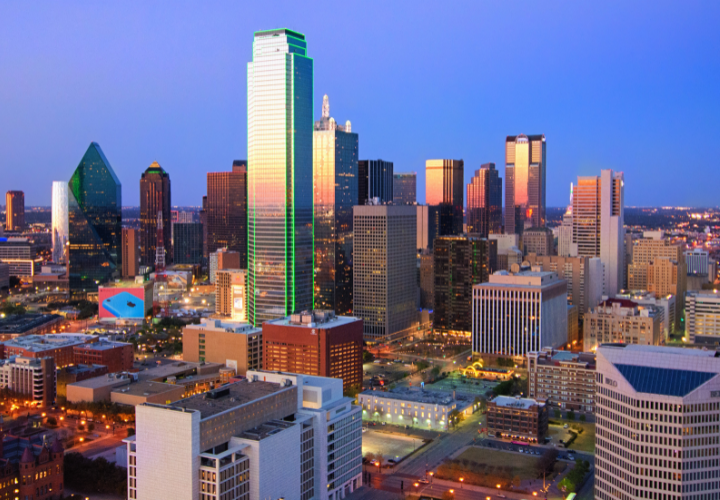Last month, we kicked off a new article series that explores the code and zoning factors that developers should take into consideration when embarking on office to residential conversions. This month, we are traveling down to the great state of Texas where these transformations are already in motion with agencies, private development, and our very own Dallas-based permitting partner, MasterPlan, leading the way to see the realization of this bold initiative take hold.
While Dallas, Texas may be doing than the rest of the country in office vacancy rates, they are still struggling.
Three years after the COVID-19 pandemic introduced the world to the concept of “working from home,” many office buildings remain vacant. Cities’ downtowns feel a bit emptier as many previous residents have now opted to work remotely. Mobility data from Google found that in Dallas County alone, travel to workplaces has dropped by 16% since 2019 and the current office vacancy rate in Dallas-Fort Worth is at 26%. This does not include spaces that are leased and no longer occupied.
The office tenants that remain have relocated to newer buildings with more amenities in hopes of enticing their employees to return to the office. In an effort to revitalize these empty office spaces, many cities have begun to convert them into high-rise apartment buildings, rezoning them from Offices to Multi-Family or Mixed Use.
The Case for Adaptive Reuse
Office-to-residential conversions have provided a new use for the space, but they have also proven to be more efficient. The process for adaptive reuse projects is often 25-40% faster because much of the site has already been built, with reduced renovation costs as well. These conversions might also be more desirable amidst growing efforts to foster sustainable practices and mitigate climate change; the process of reusing and retrofitting a previously existing building is inherently sustainable.
The process has also proven to be beneficial to Dallas’ growing population. Per D Magazine, in 2030, the Dallas-Fort Worth Metroplex is projected to become the third-largest metro area in the country, surpassing the Chicago area. DFW also ranks first in the nation for net jobs created since the pandemic began, leading to an increase in the demand for housing in the area. Downtown Dallas Inc. reports that in Downtown Dallas alone, around 14,528 people reside – compared to the 200 people who lived there in the late 1990s. As an influx of people desire to live downtown, in tandem with rising costs of single-family homes, the demand for these new developments is especially high.
One of the first of these office-to-residential conversions in Dallas was Republic Tower in 2007. It was once the tallest building in Dallas upon its opening in 1954, and now it houses 36 stories of residential units.
Several more conversions have taken place since 2007. One notable remodel is the former First National Bank Tower; now called The National, it is a mixed-use property featuring a hotel, restaurants, offices, and over 300 apartments. Many other projects are in tow, including the conversions of Santander Tower and Bryan Tower, which hold 1.4 million and 1.1 million square feet, respectively. Younger generations have flocked to the new developments with a renewed interest in experiencing life downtown.
The Goldilocks Zone
Not just any office building can be converted into a residential space, though; certain buildings fall in a “Goldilocks Zone,” meaning they are “just right” for renovations. Older, mid-rise buildings are preferable, both because they would benefit from refurbishing and because of their structure. Many of these buildings, which were built between the 1950s and 1980s, have central cores and smaller floor plates than more “modern” buildings. As a result, they can allow for more apartment units with ample natural light. At least two sides of these buildings must face open areas along streets to prevent them from being shadowed by neighboring structures, ensuring this natural light from all angles.
While the revitalization of downtowns may be a gradual process, it can certainly be streamlined by locating, rezoning, and renovating the many Goldilocks office buildings that exist. With the influx of people that will begin to live in these apartments, downtown areas like the Central Business District will see more foot traffic from residents and visitors alike. Though the District does not currently have a full-service grocery store, this could change as the downtown population and demand begins to increase. Office-to-residential projects could bring thousands of new residents into the heart of Dallas, leading to a robust and thriving downtown – it’s just a matter of finding buildings that are “just right”.
Subscribe to the Milrose Insights monthly eNewsletter and join us next month as we take a look at Chicago’s upcoming plans to convert 5 million square feet of empty office space into affordable housing and weigh in on best practices for navigating office-to-residential conversions in the Windy City.







